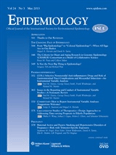
EPIDEMIOLOGY
metrics 2024
Unveiling insights that shape epidemiological practices.
Introduction
EPIDEMIOLOGY, published by Lippincott Williams & Wilkins, stands as a vital resource in the field of epidemiological research. With its ISSN 1044-3983 and E-ISSN 1531-5487, this journal has been a cornerstone for scholars since its inception in 1990. Covering a wide array of topics within the domain, it strives to disseminate cutting-edge findings that inform public health policies and clinical practices. Currently ranked Q3 in Epidemiology and positioned at #33 out of 148 according to Scopus, the journal boasts an impressive 78th percentile rank, reflecting its significance and impact within the academic community. Though not open access, EPIDEMIOLOGY provides robust access options for institutional subscribers, ensuring that critical epidemiological insights reach a broad audience. As this field continues to evolve, the journal remains dedicated to empowering researchers, practitioners, and students with the knowledge necessary to advance public health initiatives and improve population health outcomes.
Metrics 2024
 0.66
0.66 4.70
4.70 4.90
4.90 198
198Metrics History
Rank 2024
Scopus
IF (Web Of Science)
JCI (Web Of Science)
Quartile History
Similar Journals
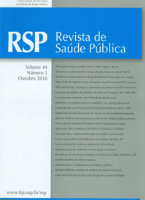
REVISTA DE SAUDE PUBLICA
Elevating Public Health Discourse and InnovationREVISTA DE SAUDE PUBLICA is a distinguished peer-reviewed journal dedicated to advancing the fields of public health and epidemiology. Since its inception in 1967, this Brazilian publication has been an essential resource for researchers and practitioners alike, promoting open access to vital research and innovations that shape health policies and public health practices. With an impressive impact reflected in its Q2 rankings in both Medicine (miscellaneous) and Public Health, Environmental and Occupational Health categories, the journal remains a key player in disseminating knowledge that drives societal well-being. The Scopus ranking positions it favorably at #209 out of 665 in its field, showcasing its commitment to quality and relevance. Published by the FACULDADE SAUDE PUBL DA USP in São Paulo, Brazil, REVISTA DE SAUDE PUBLICA offers a platform for scholars and professionals to engage with cutting-edge research from 1967 to 2024, ultimately fostering a healthier global community.
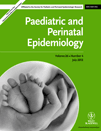
PAEDIATRIC AND PERINATAL EPIDEMIOLOGY
Leading the Charge in Epidemiological ExcellencePAEDIATRIC AND PERINATAL EPIDEMIOLOGY is a premier journal in the field of epidemiology, published by WILEY. Established in 1987, it provides an invaluable forum for researchers, professionals, and students interested in the intersections of pediatric health and perinatal epidemiology. With its strong reputation, the journal holds a distinguished Q2 ranking in Epidemiology and a Q1 ranking in Pediatrics, Perinatology, and Child Health as of 2023, indicating its influential role in advancing knowledge and practice. The journal is indexed in Scopus, boasting impressive rankings, including Rank #52 out of 330 in Pediatrics, with an 84th percentile standing, demonstrating its significant impact in the field. Although not an Open Access journal, PAEDIATRIC AND PERINATAL EPIDEMIOLOGY equips its readers with high-quality research aimed at improving child and maternal health outcomes, making it a vital resource for anyone committed to advancing public health in these critical areas.
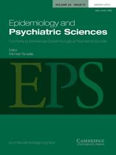
Epidemiology and Psychiatric Sciences
Exploring the intersection of epidemiology and psychiatry.Epidemiology and Psychiatric Sciences is a leading open-access journal published by Cambridge University Press, dedicated to advancing the fields of epidemiology, psychiatry, and public health. With a strong impact reflected in its Q1 ranking in three critical areas—Epidemiology, Psychiatry and Mental Health, and Public Health, Environmental and Occupational Health—this journal stands at the forefront of interdisciplinary research. Since its inception in 2011, Epidemiology and Psychiatric Sciences has provided a platform for researchers and practitioners to share innovative findings, with the aim of improving mental health outcomes and addressing public health challenges. The journal's commitment to open access, a practice adopted in 2020, ensures that vital research is available to a broader audience, further facilitating knowledge dissemination. Researchers, professionals, and students in these domains will find the journal an invaluable resource in navigating the complex interplay between various factors influencing mental health and well-being.
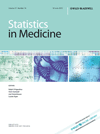
STATISTICS IN MEDICINE
Transforming health research with cutting-edge statistical applications.Statistics in Medicine, published by Wiley, is a prestigious journal dedicated to the advancement of statistical methods and their application in biomedical research. Established in 1982, this journal has become a cornerstone in the fields of Epidemiology and Statistics and Probability, demonstrating its importance by consistently achieving a Q1 ranking in the 2023 category quartiles. With an impressive ISSN of 0277-6715 and an E-ISSN of 1097-0258, it serves as a vital platform for disseminating high-quality research that enhances evidence-based medicine. Although the journal does not currently offer open access, it remains highly regarded, holding a Scopus rank of #66 in Mathematics and #80 in Medicine, indicating its significant impact on the academic community. By publishing cutting-edge research, Statistics in Medicine aims to bridge the gap between statistical theory and practical application in health domains, fostering a rigorous dialogue among researchers, clinicians, and statisticians alike.

Statistics in Biosciences
Transforming Biosciences with Cutting-Edge StatisticsStatistics in Biosciences is a distinguished journal published by Springer, focusing on the innovative interplay between statistical methodologies and biosciences. Established in 2009, this journal aims to provide a platform for the dissemination of cutting-edge research in statistical applications within biochemistry, genetics, and molecular biology. With an impressive impact factor and a distinguished ranking in multiple categories, including Q2 in Biochemistry, Genetics and Molecular Biology (miscellaneous) and Q3 in Statistics and Probability, it serves as a crucial resource for researchers, professionals, and students seeking to deepen their understanding of statistical applications in biological contexts. The journal is accessible through traditional subscription models, ensuring that high-quality research remains available to a wide audience. Featuring contributions that advance statistical theory and application in the biosciences, Statistics in Biosciences is committed to fostering collaboration and innovation in a rapidly evolving scientific landscape.
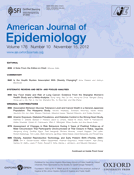
AMERICAN JOURNAL OF EPIDEMIOLOGY
Elevating Knowledge, Enhancing Public HealthAmerican Journal of Epidemiology is a premier peer-reviewed journal published by Oxford University Press, focusing on the advancement of epidemiological knowledge and methodology since its inception in 1921. With an ISSN of 0002-9262 and E-ISSN 1476-6256, this influential journal serves as a vital resource for researchers and practitioners worldwide, highlighting significant epidemiological findings and fostering dialogue within the field. Ranked in the Q2 category of Epidemiology and holding a commendable 80th percentile in Scopus' ranking, the journal continues to play a significant role in shaping public health policies and practices. Although the journal is not open access, it remains accessible through institutional subscriptions, ensuring comprehensive discourse on pressing epidemiological issues. By continuously publishing high-quality research that informs disease prevention and control strategies, the American Journal of Epidemiology stands at the forefront of epidemiological inquiry, promoting improved health outcomes on a global scale.

ENVIRONMENTAL HEALTH PERSPECTIVES
Connecting communities with impactful environmental health findings.Environmental Health Perspectives (EHP) is a premier open-access journal published by the U.S. Department of Health and Human Services, Public Health Science, dedicated to publishing rigorous and impactful research in the field of environmental health. Since its inception in 1972, EHP has become a leading platform for disseminating knowledge on the interactions between the environment and human health, making significant contributions to the fields of toxicology and public health. With an impressive impact factor and a Q1 ranking in both Health, Toxicology and Mutagenesis and Public Health, Environmental and Occupational Health categories, EHP ranks among the top journals globally, reflecting its high citation and visibility within the academic community. Researchers, professionals, and students alike will find a wealth of vital information within its pages, as EHP covers a wide array of topics related to environmental exposures, health outcomes, and policy implications. Furthermore, EHP engages with a global audience through its commitment to open access, ensuring that critical research is available to all, enhancing the collective understanding of environmental health issues since 1972.
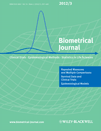
BIOMETRICAL JOURNAL
Empowering researchers with high-impact statistical insights.BIOMETRICAL JOURNAL is a prestigious academic publication dedicated to advancing the fields of Medicine and Statistics. Published by WILEY since its inception in 1977, this journal plays a critical role in disseminating cutting-edge research and methodologies that bridge the gap between statistical theory and real-world medical applications. With an impressive Q1 ranking in both Medicine (miscellaneous) and Statistics, Probability and Uncertainty, it is recognized for its high-impact contributions to the scientific community. The journal actively encourages submissions that utilize innovative statistical techniques to address complex biomedical issues, making it an essential resource for researchers, professionals, and students aiming to enhance their understanding of quantitative approaches in health and medicine. Although the journal is not open access, its rigorous peer-review process guarantees the quality and relevance of published works, further establishing its significance in the academic landscape.
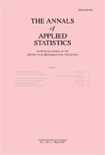
Annals of Applied Statistics
Elevating Standards in Applied Statistical ResearchThe Annals of Applied Statistics, published by the Institute of Mathematical Statistics (IMS), is a leading academic journal that serves as a crucial repository for groundbreaking research in the fields of statistics and probability applications. Since its inception in 2008 and continuing through 2024, this journal has established itself as an influential platform with a notable reputation, boasting a prestigious Q1 classification in 2023 across critical categories such as Modeling and Simulation and Statistics, Probability, and Uncertainty. With its rigorous peer-review process and significant Scopus rankings—including a position of #78 in Statistics and Probability—Annals of Applied Statistics aims to foster innovative statistical methods and their applications in a variety of disciplines. Researchers, professionals, and students interested in the latest advancements in analytical methods will find this journal essential for navigating the evolving landscape of applied statistics. The journal does not offer open access options, ensuring that published content reflects the highest academic standards.

EUROPEAN JOURNAL OF EPIDEMIOLOGY
Advancing public health through rigorous epidemiological research.The European Journal of Epidemiology is a premier peer-reviewed journal published by Springer, specializing in the vast and critical field of epidemiology. With its ISSN 0393-2990 and E-ISSN 1573-7284, this journal has been a leading platform for disseminating high-quality research since its inception in 1985, encompassing a comprehensive range of topics pertinent to public health and epidemiological science. Proudly based in the Netherlands, the journal has secured a prestigious Q1 ranking in the field of Epidemiology and boasts an impressive Scopus rank of #8 out of 148 in its category, placing it in the 94th percentile among its peers. With a commitment to advancing knowledge and practice in epidemiology, the journal provides invaluable insights for researchers, healthcare professionals, and students, facilitating a better understanding of disease distribution and determinants in populations. While it operates under a subscription model, the European Journal of Epidemiology continues to uphold its reputation as an essential resource for innovative research and public health advancements through the years.